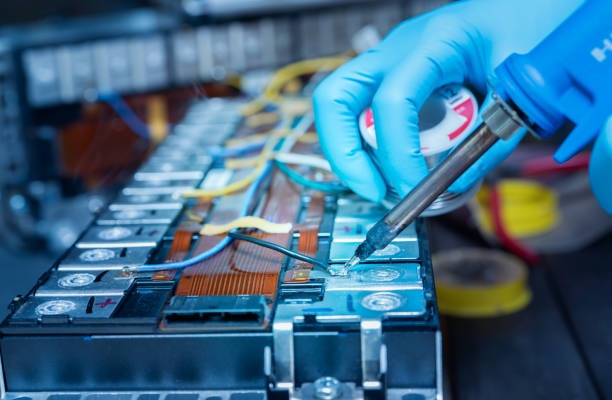
Introduction
Lithium-ion batteries have revolutionized portable energy storage since their commercial introduction in the early 1990s. These versatile power sources have enabled the development of countless electronic devices, electric vehicles, and renewable energy storage systems that define our modern world. What many people don’t realize, however, is that “li ion batteries” is an umbrella term covering numerous distinct chemistries and designs, each with unique properties and applications.

This article explores the diverse landscape of lithium-ion battery technologies, examining their chemical compositions, physical structures, performance characteristics, and ideal use cases. Understanding these differences, including how they affect battery life, is crucial for engineers, consumers, and policymakers as we continue to expand our reliance on battery-powered systems in the pursuit of a more sustainable future.
The Fundamentals of Lithium-Ion Technology
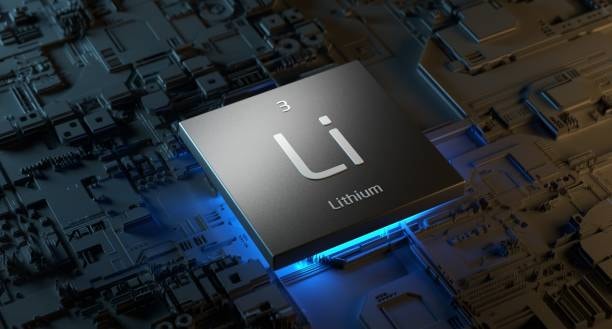
Before diving into specific battery types, it’s important to understand the basic operating principles common to all lithium-ion batteries. These electrochemical devices generate electrical energy through the controlled movement of lithium ions between two electrodes—a cathode (positive) and an anode (negative)—suspended in an electrolyte solution.
During discharge, lithium ions flow from the anode to the cathode, creating a current that powers connected devices. During charging, an external power source reverses this flow, returning lithium ions to the anode where they’re stored until needed. This “rocking-chair” mechanism, where lithium ions shuttle back and forth between electrodes, gives rechargeable batteries like lithium-ion batteries their rechargeable capability.
The key components in any lithium-ion battery include:
- Cathode: Typically a lithium metal oxide that determines many of the battery’s properties
- Anode: Usually graphite, but other materials are increasingly common
- Electrolyte: A lithium salt dissolved in an organic solvent
- Separator: A permeable membrane that prevents electrode contact while allowing ion flow
- Current collectors: Conductive materials (usually copper and aluminum) that connect electrodes to external circuits
The specific materials used in these components—particularly the cathode—create distinct battery chemistries, including lithium iron phosphate batteries, with different characteristics regarding energy density, power output, lifespan, safety, cost, and environmental impact.
The Role of Electrolytes
The electrolyte serves as the medium through which lithium ions travel between electrodes. Conventional lithium-ion batteries use liquid electrolytes consisting of lithium compounds like lithium salts (typically LiPF₆) dissolved in organic carbonate solvents such as ethylene carbonate (EC), dimethyl carbonate (DMC), or diethyl carbonate (DEC).
Key electrolyte characteristics include:
- Ionic Conductivity: Higher conductivity allows faster ion movement and better high-rate performance
- Electrochemical Stability Window: Determines the voltage range in which the electrolyte remains stable
- Temperature Performance: Affects battery operation in extreme conditions
- Safety Characteristics: Flammability and thermal stability
- Compatibility: Interaction with electrode materials and separator
Recent advancements in electrolyte technology, along with the development of other lithium ion batteries, include:
- Electrolyte Additives: Small-percentage compounds that improve specific properties such as SEI formation, fire resistance, or low-temperature performance
- High-Voltage Electrolytes: Formulations stable above 4.5V for high-energy density applications
- Localized High-Concentration Electrolytes: Using solvation structure to improve stability
- Ionic Liquid Electrolytes: Non-flammable alternatives with wider electrochemical windows
The Solid Electrolyte Interphase (SEI)
A critical component of lithium-ion battery operation is the Solid Electrolyte Interphase (SEI), a protective layer that forms on the anode surface during initial charging cycles. This nanometer-thick film is created through reactions between the electrolyte and the anode material.
The SEI, which is critical for each battery cell, serves several essential functions:
- Preventing continuous electrolyte decomposition
- Allowing lithium ions to pass while blocking electrons
- Protecting the anode from solvent co-intercalation
- Influencing rate capability and cycle life
The composition and quality of the SEI significantly impact battery performance and longevity. Modern battery manufacturing often includes formation protocols specifically designed to develop optimal SEI characteristics.
Lithium-Ion Battery Types Based on Cathode Chemistry
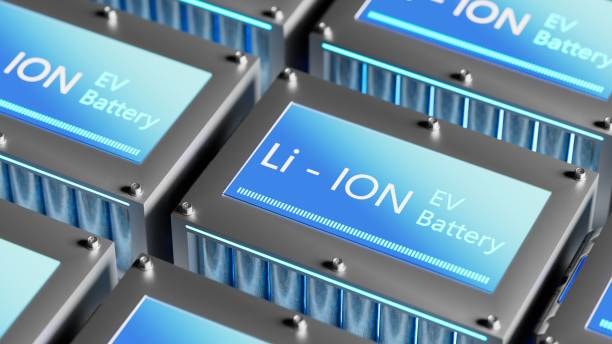
Lithium Cobalt Oxide (LCO)
Chemical Formula: LiCoO₂, commonly found in lithium ion batteries.
Lithium Cobalt Oxide represents the original lithium-ion chemistry commercialized by Sony in 1991. These batteries offer high specific energy (energy per unit weight), making them ideal for portable consumer electronics where space and weight are at a premium.
Key Characteristics:
- High specific energy (150-200 Wh/kg)
- Good energy density
- Relatively limited lifespan (500-1000 cycles)
- Poor thermal stability and safety concerns at high temperatures
- Limited power capabilities
- Contains significant amounts of cobalt, raising cost and ethical concerns
Applications:
- Smartphones
- Laptops
- Digital cameras
- Tablets
- Other portable consumer electronics
Despite their continued popularity in consumer devices, LCO batteries face increasing scrutiny due to their reliance on cobalt—a metal associated with problematic mining practices and supply chain challenges. The battery industry has steadily reduced cobalt content in newer formulations while developing alternative chemistries.
Lithium Manganese Oxide (LMO)
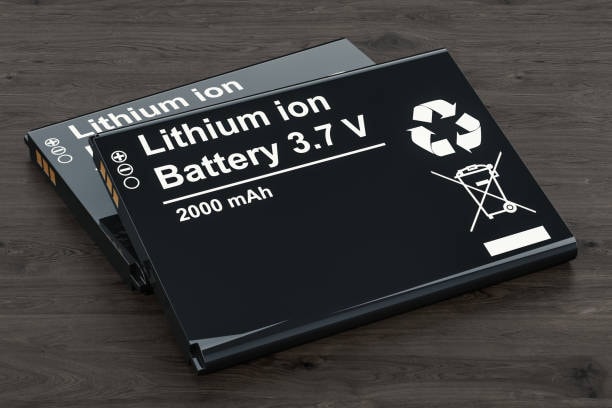
Chemical Formula: LiMn₂O₄
Developed in the mid-1990s, Lithium Manganese Oxide batteries utilize a three-dimensional spinel structure that facilitates improved ion flow. This architecture enhances power capability while providing better thermal stability than LCO batteries.
Key Characteristics:
- Moderate specific energy (100-150 Wh/kg)
- High power capability
- Enhanced thermal stability and safety
- Lower cost due to manganese’s abundance
- Reduced environmental impact
- Relatively short cycle life (300-700 cycles)
- Capacity fading at higher temperatures
Applications:
- Power tools
- Medical devices
- Early electric vehicles (often as hybrid systems)
- Some portable electronics
While pure LMO batteries have largely been superseded by newer chemistries, manganese-based compounds remain important components in blended cathodes that seek to combine the advantages of multiple materials.
Lithium Iron Phosphate (LFP)
Chemical Formula: LiFePO₄
Introduced in the late 1990s, Lithium Iron Phosphate batteries have emerged as one of the safest and most durable lithium-ion chemistries compared to lithium cobalt oxide battery typ . Their olivine crystal structure creates strong bonds that resist oxygen release during abuse conditions, significantly reducing fire risks.
Key Characteristics:
- Exceptional thermal stability and safety
- Long cycle life (2000-5000+ cycles)
- High current capability
- Wide operating temperature range
- Cobalt-free composition
- Lower cost raw materials
- Lower specific energy (90-120 Wh/kg)
- Lower nominal voltage (3.2V vs. 3.6-3.7V for other chemistries)
Applications:
- Electric buses and commercial vehicles
- Energy storage systems
- Affordable electric vehicles
- Marine and RV applications
- Power tools
- Medical devices requiring enhanced safety
LFP batteries have seen a significant resurgence in recent years, particularly in electric vehicles where their safety, longevity, and lower cost have outweighed their energy density disadvantage for many lithium ion batteries suitable manufacturers. Tesla, BYD, and several other automakers have shifted significant portions of their production to LFP chemistry and lithium nickel cobalt formulations .
Lithium Nickel Manganese Cobalt Oxide (NMC)

Chemical Formula: LiNiₓMnᵧCoₖO₂ (where x+y+k=1)
NMC batteries represent one of the most successful attempts to balance the performance characteristics of different cathode materials. By combining nickel (high energy), manganese (structural stability), and cobalt (electronic conductivity), these batteries offer versatile performance suitable for diverse applications.
Common NMC Variants:
- NMC 111: Equal parts Ni, Mn, Co (LiNi₁/₃Mn₁/₃Co₁/₃O₂)
- NMC 532: 50% Ni, 30% Mn, 20% Co (LiNi₀.₅Mn₀.₃Co₀.₂O₂)
- NMC 622: 60% Ni, 20% Mn, 20% Co (LiNi₀.₆Mn₀.₂Co₀.₂O₂)
- NMC 811: 80% Ni, 10% Mn, 10% Co (LiNi₀.₈Mn₀.₁Co₀.₁O₂)
- NMC 955: 90% Ni, 5% Mn, 5% Co (LiNi₀.₉Mn₀.₀₅Co₀.₀₅O₂)
Key Characteristics:
- Good specific energy (150-220 Wh/kg)
- Balanced power capability
- Decent thermal stability
- Moderate to good cycle life (1000-2000 cycles)
- Flexible performance based on exact composition
- Lower cobalt content than LCO batteries
Applications:
- Electric vehicles
- E-bikes and electric scooters
- Power tools
- Medical devices
- Grid storage systems
- High-performance portable electronics
NMC formulations continue to evolve, with manufacturers progressively reducing cobalt content while increasing nickel for higher energy density. Common variants include NMC 111 (equal parts Ni, Mn, Co), NMC 532, NMC 622, and NMC 811, with higher numbers indicating higher nickel content.
Lithium Nickel Cobalt Aluminum Oxide (NCA)
Chemical Formula: LiNiₓCoᵧAlₖO₂
Similar to NMC, NCA batteries aim to capitalize on nickel’s high energy while mitigating its stability issues. The addition of aluminum helps improve structural stability and thermal performance.
Crystalline Structure: NCA uses the same layered structure as LCO and NMC, with aluminum partially substituting for cobalt and manganese. A typical composition is LiNi₀.₈Co₀.₁₅Al₀.₀₅O₂.
Key Characteristics:
- Very high specific energy (200-260 Wh/kg)
- Good power density
- Long cycle life (1000-1500 cycles)
- Moderate thermal stability
- Higher cost than some alternatives
- Contains cobalt, though less than LCO
Aluminum’s Role: The aluminum dopant serves several crucial functions in NCA:
- Stabilizes the crystal structure during cycling
- Improves thermal stability by increasing the onset temperature for oxygen release
- Enhances cycling stability by reducing volume changes
- Mitigates the cation mixing problem common in nickel-rich cathodes (where Ni²⁺ ions migrate to lithium sites)
Manufacturing Challenges: NCA production requires careful control of atmosphere and moisture during synthesis and processing:
- Sensitivity to moisture and CO₂ during production
- Need for precise nickel oxidation state control
- Requirement for protective coatings or dopants
- Careful formation protocols during initial battery cycling
Recent Developments: Advanced NCA variants include:
- Single-crystal particles (reduced cracking during cycling)
- Core-shell structures (balancing energy and stability)
- Gradient compositions (optimizing surface vs. bulk properties)
- Advanced coatings (Al₂O₃, LiAlO₂, ZrO₂, etc.)
Applications:
- Premium electric vehicles (notably Tesla)
- High-performance electronics
- Grid storage systems
- Medical devices
Tesla, in partnership with Panasonic, has been the most prominent adopter of NCA technology, using these cells in many of their vehicles alongside newer LFP and NMC options. The chemistry’s high energy density contributes to Tesla’s industry-leading range figures in their premium models.
Lithium Nickel Oxide (LNO)

Chemical Formula: LiNiO₂
Lithium Nickel Oxide batteries represent attempts to maximize energy density by utilizing nickel-rich cathodes with minimal or no cobalt content. These batteries, like most lithium ion batteries, have faced challenges with thermal stability but continue to be developed for specialized applications.
Crystalline Structure: LNO has the same α-NaFeO₂-type layered structure as LCO, but with nickel as the transition metal. This structure theoretically allows for complete lithium extraction, offering very high capacity.
Core Challenges: Despite its promising theoretical capacity, pure LNO faces several significant obstacles:
- Cation Mixing: Ni²⁺ ions tend to migrate to lithium sites due to similar ionic radii (0.69Å vs. 0.76Å)
- Oxygen Release: Considerable oxygen evolution during delithiation, creating safety hazards
- Phase Transitions: Multiple phase changes during cycling, creating mechanical stress
- Electrolyte Incompatibility: High reactivity with conventional electrolytes
- Moisture Sensitivity: Extreme reactivity with atmospheric water, complicating manufacturing
Mitigation Strategies: Research approaches to address these challenges include:
- Partial substitution with stabilizing elements (Co, Al, Mn, Ti)
- Surface coatings to reduce interfacial reactions
- Gradient compositions with stabilized surfaces
- Single-crystal structures to reduce grain boundary effects
- Advanced electrolytes compatible with high-nickel materials
Key Characteristics:
- Very high theoretical energy density
- Cobalt-free or ultra-low cobalt content
- Challenges with thermal stability
- Limited commercial deployment
- Ongoing research interest
Applications:
- Experimental electric vehicles
- Research platforms
- Potential future consumer electronics
Pure LNO batteries remain relatively uncommon in commercial applications due to safety and stability concerns, but nickel-rich variants of NMC and NCA continue to increase their nickel content while addressing these limitations.
Lithium Titanate (LTO)
Chemical Formula: Li₄Ti₅O₁₂ (anode material, typically paired with LMO, NMC, or other cathodes)
Unlike the previous entries that focus on cathode materials, Lithium Titanate batteries are categorized by their distinctive anode material. Traditional graphite anodes are replaced with lithium titanate, which offers exceptional stability, safety, and cycle life at the expense of energy density.
Key Characteristics:
- Exceptional cycle life (10,000-30,000 cycles)
- Extremely fast charging capability
- Excellent low-temperature performance
- Superior safety profile
- Wide operating temperature range (-50°C to 75°C)
- Low specific energy (70-80 Wh/kg)
- Higher cost per kWh
Applications:
- Electric buses with opportunity charging
- Solar street lighting
- UPS and backup power systems
- Military and aerospace applications
- Cold-weather applications
- Applications requiring frequent cycling
LTO batteries excel in scenarios requiring frequent deep cycling or fast charging. Their ability to accept high charging currents without degradation makes them suitable for opportunity charging applications, such as electric buses that can rapidly recharge at designated stops.
Lithium-Ion Battery Types Based on Form Factor

Beyond chemical composition, lithium-ion batteries are also categorized by their physical structure and packaging. These design considerations significantly impact how batteries integrate into devices and systems.
Cylindrical Cells
Cylindrical cells represent the most established lithium-ion form factor, building on decades of manufacturing experience with earlier battery technologies like alkaline and nickel-cadmium cells. These batteries consist of electrode sheets wound into a “jelly roll” configuration and packaged in a metal cylinder with standardized dimensions.
Key Characteristics:
- Excellent mechanical stability
- Good thermal management (heat dissipation from curved surface)
- Standardized dimensions
- Cost-effective production
- Lower energy density than some alternatives (due to packaging inefficiency)
- Limited design flexibility
Common Formats:
- 18650 (18mm diameter, 65mm length) – The ubiquitous standard for laptops and many power tools
- 21700 (21mm diameter, 70mm length) – Newer standard with higher capacity, adopted by Tesla and others
- 26650 (26mm diameter, 65mm length) – Used in high-power applications
- 14500 (14mm diameter, 50mm length) – AA-size rechargeable format
Applications:
- Electric vehicles (Tesla, Rivian)
- Power tools
- Laptop batteries
- Flashlights
- E-cigarettes
- Various portable electronics
The 18650 format has been the backbone of the lithium-ion industry for decades, with billions produced annually. The newer 21700 format, pioneered by Tesla and Panasonic, offers approximately 50% more energy capacity while maintaining similar production efficiency.
Prismatic Cells
Prismatic cells package electrode materials in rectangular housings, typically with aluminum or steel casings. This format allows for more efficient space utilization in devices with rectangular form factors.
Key Characteristics:
- Efficient space utilization
- Flexible dimensions based on application needs
- Good mechanical protection
- Heavier packaging compared to pouch cells
- More challenging thermal management than cylindrical cells
- Less standardization across manufacturers
Applications:
- Electric vehicles (many manufacturers)
- Consumer electronics
- Energy storage systems
- Marine applications
- Industrial equipment
Prismatic cells have become particularly popular in the automotive sector, where their rectangular shape allows for efficient battery pack design. Companies like CATL, LG Energy Solution, and Samsung SDI are major producers of automotive-grade prismatic cells.
Pouch Cells
Pouch cells represent the most space-efficient lithium-ion packaging, utilizing flexible laminate materials instead of rigid metal casings. These cells consist of stacked or folded electrode sheets sealed within an aluminum-polymer composite pouch.
Key Characteristics:
- Highest packaging efficiency (up to 90-95% active material)
- Lightweight design
- Flexible dimensions and shapes
- Thinner profile possible
- Limited mechanical protection
- Requires external compression for optimal performance
- Potential for swelling during lifecycle
Applications:
- Smartphones
- Tablets
- Ultra-thin laptops
- Wearable devices
- Some electric vehicles
- Aerospace applications
Pouch cells offer maximum design flexibility and energy density, making them ideal for consumer electronics where space is at a premium. However, they require more careful integration into devices to provide adequate mechanical protection and prevent swelling issues.
Coin/Button Cells
While less common for high-capacity applications, lithium-ion technology is also available in small coin or button cell formats, similar to those used for watch batteries.
Key Characteristics:
- Extremely compact size
- Standardized dimensions
- Lower capacity than other formats
- Often primary (non-rechargeable) but rechargeable versions exist
Applications:
- Wearable devices
- Medical implants
- RFID tags
- Backup memory power
- Small IoT devices
These miniature cells provide reliable power for applications requiring minimal energy in highly space-constrained environments.
Emerging Lithium-Ion Technologies
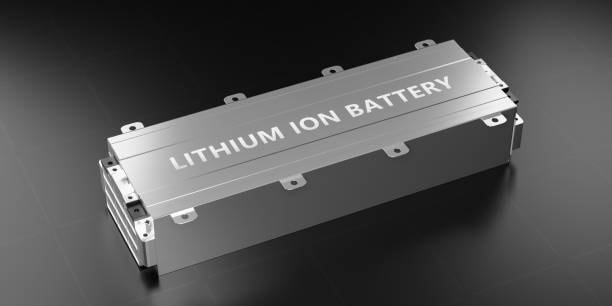
The lithium-ion landscape continues to evolve rapidly, with numerous research directions yielding promising advancements. While not yet widely commercialized, these technologies represent the likely future of energy storage.
Lithium-Sulfur (Li-S) Batteries
Chemical Composition: Lithium metal anode and sulfur-based cathode
Lithium-sulfur batteries promise dramatically higher energy density than conventional lithium-ion batteries, making them potentially suitable for electric cars with theoretical specific energy up to 2,500 Wh/kg (compared to 100-265 Wh/kg for current lithium-ion technologies).
Key Characteristics:
- Extremely high theoretical energy density
- Uses abundant, low-cost sulfur
- Environmentally friendly materials
- Significant cycle life challenges (currently limited to hundreds of cycles)
- Volume expansion issues during cycling
- Polysulfide shuttle effect degrading performance
- Low volumetric energy density
Potential Applications:
- Aviation and aerospace
- Long-range electric vehicles
- Portable electronics requiring extended runtime
- Weight-sensitive applications
Several companies, including Oxis Energy, Sion Power, and Lyten, have been working to commercialize Li-S technology, with initial applications likely in aerospace where the weight advantage outweighs cycle life limitations.
Solid-State Lithium Batteries
Rather than using liquid electrolytes, solid-state batteries employ solid ion-conducting materials to shuttle lithium ions between electrodes. This fundamental design change promises significant advantages in safety and energy density.
Key Characteristics:
- Improved safety (non-flammable electrolyte)
- Higher potential energy density
- Compatible with lithium metal anodes
- Wider operating temperature range
- Longer theoretical lifespan
- Current challenges with manufacturing scalability
- Interface resistance issues
- Higher production costs
Electrolyte Types:
- Polymer electrolytes
- Oxide ceramics (LLZO, LATP)
- Sulfide ceramics (LGPS)
- Composite electrolytes (combining multiple approaches)
Companies Developing Technology:
- QuantumScape
- Solid Power
- Toyota
- Samsung
- ProLogium
- Factorial Energy
Solid-state technology represents perhaps the most actively pursued next-generation battery technology, including lithium polymer with virtually every major automotive and battery manufacturer investing in research. Commercial deployment has begun in limited applications, with wider adoption expected in the late 2020s typical lithium ion battery.
Silicon Anode Batteries
While most current lithium-ion batteries use graphite anodes, silicon offers theoretical capacity up to ten times higher. However, silicon undergoes massive volume expansion (up to 300%) during lithium insertion low thermal stability, creating significant engineering challenges.
Key Characteristics:
- Much higher anode capacity than graphite
- Compatible with existing manufacturing infrastructure
- Volume expansion challenges
- Cycle life limitations
- Ongoing innovations in nanostructuring and composite formulations
Approaches:
- Silicon-graphite composites (already in limited commercial use)
- Silicon nanowires
- Silicon nanoparticles
- Porous silicon structures
- Silicon-carbon composites
Applications:
- Enhanced conventional lithium-ion batteries
- Higher-capacity portable electronics
- Extended-range electric vehicles
Silicon is already being incorporated into commercial graphite anodes in small percentages (typically 5-10%) lithium based batteries. Companies like Sila Nanotechnologies, Amprius, and Group14 Technologies are developing solutions for higher silicon content.
Lithium-Rich Layered Oxides
Chemical Formula: Li₁₊ₓM₁₋ₓO₂ (where M represents various transition metals)
These advanced cathode materials incorporate excess lithium into their structure, enabling higher capacity than conventional layered oxides lithium battery types.
Key Characteristics:
- Higher capacity than conventional cathodes
- Complex crystal structures
- Voltage fade issues during cycling
- Oxygen release concerns at high voltages
- Active research area
Potential Applications:
- High-energy density batteries
- Advanced electric vehicles
- Next-generation portable electronics
While still primarily in the research phase, these materials represent a potential evolutionary step for conventional lithium-ion technology positive electrode.
Specialized Lithium-Ion Battery Types
High-Power Batteries
Some lithium-ion formulations are specifically optimized for power delivery rather than energy storage, capable of discharging their energy very quickly to support high-current applications.
Key Characteristics:
- Optimized electrode surface area
- Thinner electrodes
- Enhanced conductivity
- Lower internal resistance
- Typically lower energy density
- Often LTO, LFP, or LMO based
Applications:
- Power tools
- Electric drivetrains requiring peak power
- Regenerative braking systems
- Racing applications
- Medical devices with pulse power requirements
High-Energy Batteries
Conversely, high-energy batteries prioritize maximum storage capacity, often at the expense of power capability or cycle life.
Key Characteristics:
- Thicker electrodes
- Higher loading of active materials
- Less emphasis on power capability
- Often NCA or high-nickel NMC based
- Typically higher cost per Wh
Applications:
- Long-range electric vehicles
- Consumer electronics requiring maximum runtime
- Grid storage systems
- Applications where volume or weight constraints are critical
Long-Life Batteries
Some applications require exceptional durability over thousands of cycles, even if that means compromising on energy density.
Key Characteristics:
- Conservative voltage ranges
- LFP or LTO chemistry common
- Special electrolyte formulations
- Advanced battery management systems
- Often more expensive initially but lower lifetime cost
Applications:
- Grid storage systems
- Industrial equipment
- Commercial vehicles with high utilization
- Solar energy storage
- Applications where replacement is difficult or costly
Low-Temperature Batteries
Standard lithium-ion batteries perform poorly in cold environments, but specialized formulations can maintain functionality well below freezing.
Key Characteristics:
- Special electrolyte compositions with lower freezing points
- Modified electrode designs
- Often LTO-based for extreme cold
- Lower energy density
- Higher cost
Applications:
- Arctic and Antarctic equipment
- Cold-climate electric vehicles
- Outdoor winter equipment
- Medical cold chain applications
- Space applications
Performance Comparison of Common Lithium-Ion Chemistries
| Chemistry | Energy Density (Wh/kg) | Cycle Life | Charging Speed | Safety | Cost | Operating Temperature |
|---|---|---|---|---|---|---|
| LCO | 150-200 | 500-1000 | Moderate | Poor | High | Narrow |
| LMO | 100-150 | 300-700 | Fast | Good | Low | Moderate |
| LFP | 90-120 | 2000-5000+ | Very Fast | Excellent | Low | Wide |
| NMC | 150-220 | 1000-2000 | Fast | Good | Moderate | Moderate |
| NCA | 200-260 | 1000-1500 | Fast | Moderate | High | Moderate |
| LTO | 70-80 | 10000-30000 | Ultra Fast | Excellent | High | Very Wide |
Applications and Optimal Battery Selection
Consumer Electronics
The consumer electronics sector has been the primary driver of lithium-ion battery development since the technology’s inception. Different device categories, including mobile phones, have distinct requirements that influence battery selection:
Smartphones: These devices typically use LCO or NMC pouch cells, prioritizing high energy density in a thin form factor. Recent premium models have begun incorporating silicon-graphite composite anodes for increased capacity.
Laptops: Traditionally reliant on 18650 cylindrical cells (usually NMC or NCA), many newer models now use pouch cells for thinner designs. Gaming laptops and high-performance models often use cylindrical cells for better thermal management.
Wearables: Extremely space-constrained designs typically use tiny custom-shaped pouch cells, often with LCO chemistry for maximum energy density.
Tablets and cell phones : Similar to smartphones, tablets generally use flat pouch cells with high energy density chemistries, though size constraints are somewhat less severe.
E-readers: With their low power consumption and infrequent charging, these devices often use smaller capacity LCO or NMC batteries optimized for longevity rather than charging speed.
Electric Vehicles
The hybrid and electric vehicles sector has become the largest consumer of lithium-ion batteries and has driven many recent innovations. Different vehicle categories have distinct requirements:
Mass-Market EVs: These vehicles increasingly use LFP prismatic cells for their combination of safety, longevity, and moderate cost. Examples include the Tesla Model 3 Standard Range and various BYD models.
Premium/Long-Range EVs: High-energy density is paramount for vehicles advertising extended range. These typically use NCA or high-nickel NMC cells, either in cylindrical (Tesla) or prismatic (most other manufacturers) formats.
Commercial Vehicles: Buses, delivery vans, and trucks prioritize safety, longevity, and charging speed over maximum energy density. LFP and LTO chemistries dominate this segment.
Hybrids: These vehicles require batteries optimized for power rather than energy capacity, as they regularly charge and discharge at high rates during regenerative braking and acceleration. LMO and LFP are common choices.
Renewable Energy Storage
Grid-scale and residential energy storage systems have specialized requirements distinct from mobile applications, including those used in portable power tools :
Home Energy Storage: These systems typically use LFP batteries for their safety, longevity, and moderate cost. Examples include the Tesla Powerwall, LG RESU, and Sonnen eco.
Commercial/Industrial Storage: Larger installations generally use LFP or NMC prismatic cells in rack-mounted configurations, emphasizing safety and cycle life.
Grid-Scale Storage: Massive utility installations prioritize longevity, safety, and cost-effectiveness over energy density. LFP dominates this market, though flow batteries and other technologies compete in some applications.
Remote Microgrids: Systems deployed in isolated locations with limited maintenance capabilities typically use LFP for its robustness and longevity.
Medical Devices
Medical applications have exceptionally stringent requirements for reliability and safety:
Implantable Devices: Pacemakers and other implants use specialized lithium-ion chemistries (often lithium silver vanadium oxide or similar) with extremely long calendar life.
Portable Medical Equipment: Devices used in hospitals typically employ LFP or LTO chemistries for their safety characteristics and longevity.
Emergency Equipment: Defibrillators and similar emergency devices use batteries optimized for shelf life and reliable high-power delivery, often LFP-based.
Aerospace and Defense
These sectors have the most demanding requirements and often lead adoption of advanced technologies:
Satellites: Space applications use highly specialized lithium-ion cells designed for radiation tolerance and extreme temperature ranges.
Drones: Commercial and military drones typically use high-energy density NMC or NCA cells, with advanced thermal management systems.
Military Equipment: Defense applications prioritize ruggedness, temperature tolerance, and safety, often utilizing LFP or specialized formulations.
Environmental and Sustainability Considerations
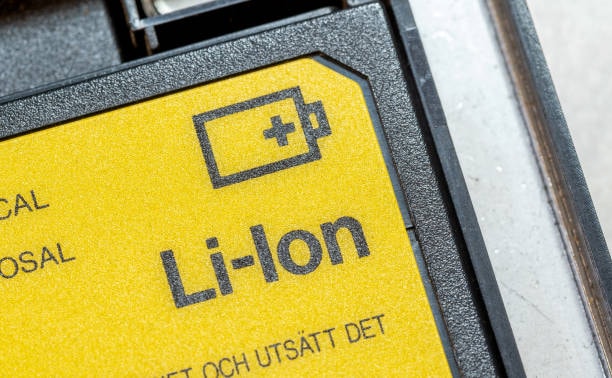
As lithium-ion batteries proliferate globally, their environmental impact has come under increasing scrutiny. Different chemistries present distinct sustainability profiles:
Raw Material Concerns
Cobalt: Primarily sourced from the Democratic Republic of Congo, cobalt mining has been associated with human rights abuses and environmental damage. LCO batteries contain the most cobalt (~60% by weight of cathode), while NMC and NCA use progressively less compared to traditional lead acid batteries . LFP and LTO are cobalt-free alternatives.
Lithium: While relatively abundant globally, lithium extraction can be water-intensive in brine operations or land-disruptive in hard-rock mining. All lithium-ion chemistries require this element, though in varying amounts.
Nickel: High-nickel formulations (NCA, NMC 811) face supply chain concerns as demand grows. Nickel mining can create significant environmental impacts, including habitat destruction and water pollution.
Rare Metals: Some specialized formulations require rare elements like vanadium or manganese, each with its own extraction impact.
Recycling and End-of-Life
Different chemistries present varying challenges and opportunities for recycling:
LCO Batteries: High cobalt content makes these economically attractive for recycling, with established processes to recover this valuable metal.
LFP Batteries: Lower intrinsic material value reduces economic incentives for recycling, though their long lifespan often leads to second-life applications before eventual recycling.
NMC Batteries: Moderate valuable metal content in traditional lithium ion batteries makes recycling economically viable, with several commercial recycling processes available.
Process Development: Newer hydrometallurgical and direct recycling processes promise higher material recovery rates and reduced environmental impact compared to traditional pyrometallurgical methods.
Carbon Footprint
The carbon footprint of battery production varies significantly by chemistry and manufacturing location:
Manufacturing Energy: Cell production is energy-intensive, with estimates ranging from 50-150 kWh of energy required per kWh of battery capacity produced.
Chemistry Impact: Higher-nickel chemistries typically have larger carbon footprints due to energy-intensive refining processes.
Regional Variation: Batteries produced in regions with clean electricity (e.g., Sweden, Norway) have significantly lower carbon footprints than those made in coal-dependent regions.
Safety Considerations
Lithium-ion batteries store considerable energy in a compact package, creating inherent safety concerns that vary by chemistry:
Thermal Runaway Risks
Thermal runaway—an uncontrolled positive feedback loop of heating and chemical reaction—represents the most serious safety risk for lithium-ion batteries. Different chemistries have varying propensities for this dangerous failure mode:
LCO: Most prone to thermal runaway when damaged, overcharged, or exposed to high temperatures. Oxygen release begins around 150°C.
NMC: Moderate thermal stability, with higher-nickel variants (NMC 811) being less stable than balanced formulations (NMC 111).
NCA: Requires careful management systems to prevent overheating incidents.
LFP: Excellent thermal stability with oxygen release occurring only above 300°C, making catastrophic thermal runaway extremely rare.
LTO: Nearly immune to thermal runaway under normal abuse conditions.
Safety Mechanisms
Modern lithium-ion batteries incorporate multiple safety features:
Shutdown Separators: Polymer separators designed to melt and seal pores at elevated temperatures, halting ion flow.
Pressure Relief: Vents or tear-away mechanisms to release pressure before catastrophic rupture.
Thermal Fuses: Components that permanently disable the cell if temperature limits are exceeded.
Current Interrupt Devices: Mechanical systems that break electrical connection under pressure buildup.
Flame-Retardant Additives: Chemicals incorporated into electrolytes to suppress combustion.
Battery Management Systems
Electronic battery management systems (BMS) provide critical safety monitoring and control:
Voltage Monitoring: Prevents over-charging and deep-discharging that can damage cells and create safety hazards.
Temperature Monitoring: Tracks cell temperature and can halt operation if unsafe conditions develop.
Current Control: Prevents excessive charging or discharging currents that could damage cells.
Balancing: Ensures all cells in a pack maintain similar voltage levels, preventing localized stress.
Future Trends and Developments
The lithium-ion battery landscape continues to evolve rapidly, with several clear trends emerging:
Cobalt Reduction
Driven by cost, supply security, and ethical concerns, manufacturers are systematically reducing cobalt content in cathodes. This trend has progressed from LCO (60% cobalt by cathode weight) to NMC 111 (20% cobalt) to NMC 811 (10% cobalt), with cobalt-free formulations gaining market share.
Silicon Integration
Silicon’s theoretical capacity is ten times that of traditional graphite anodes. While challenges with volume expansion remain, silicon is increasingly being incorporated into commercial anodes, initially as small percentages (5-10%) but gradually increasing as engineering solutions improve.
Manufacturing Scale
Gigafactories—massive battery production facilities—continue to proliferate globally. This unprecedented manufacturing scale is driving cost reductions, process refinements, and quality improvements:
- Tesla/Panasonic’s Nevada Gigafactory (35 GWh/year)
- CATL’s multiple facilities in China (combined >300 GWh/year capacity)
- LG Energy Solution’s global manufacturing network (>200 GWh/year)
- Planned European gigafactories from Northvolt, Tesla, CATL, and others
Solid-State Progression
Solid-state technology continues to advance toward commercialization, with several approaches showing promise:
- Polymer electrolytes (simplest to manufacture but temperature sensitive)
- Oxide ceramics (excellent stability but manufacturing challenges)
- Sulfide ceramics (high conductivity but moisture sensitivity)
- Hybrid/composite approaches (balancing properties of different materials)
Companies including QuantumScape, Solid Power, and Toyota have announced commercial production timelines in the 2025-2028 range.
Sustainability Focus
Increased attention to lifecycle impacts is driving several developments:
- Design for recycling and disassembly
- Reduced energy consumption in manufacturing
- Water conservation in production
- Second-life applications for automotive batteries
- Closed-loop material recovery systems
Conclusion
The diverse and evolving world of lithium-ion batteries demonstrates how a single technology platform can be adapted to meet vastly different requirements through variations in chemistry, structure, and design. From the high energy density LCO cells powering our smartphones to the ultra-durable LFP batteries enabling grid transformation, each chemistry, including rechargeable lithium batteries, represents a careful balance of performance characteristics optimized for specific applications.
As we look toward the future, lithium-ion technology continues to advance along multiple parallel paths—higher energy density for extended range electric vehicles, enhanced safety for critical applications, improved sustainability through reduced reliance on problematic materials, and lower costs through manufacturing innovation and economies of scale. Emerging technologies like solid-state electrolytes and silicon anodes promise to extend these performance gains further.
Understanding the distinctions between different lithium-ion chemistries empowers engineers, consumers, and policymakers to make informed decisions about energy storage. Rather than viewing batteries as simple commodities, recognizing their complexity and diversity allows for better system design, appropriate application selection, and more accurate assessment of environmental impacts.
As our society continues its transition toward electrification and renewable energy, the importance of advanced battery technology, including various types of lithium batteries, will only grow. The continued refinement and diversification of lithium-ion technology, alongside the development of complementary storage approaches and understanding the various types of lithium ion , will remain central to addressing the energy challenges of the 21st century.
